First Edition Empire Strikes Back Hardcover: 1980 Star Wars Book Club
$88.00
This is a “very good” book club edition of “The Empire Strikes Back” published by Del Rey and the Science Fiction Book Club in July of 1980 to coincide with the release of the sequel to the greatest science fiction film of all time.
This book club hardcover is indeed the “first edition” of this title, being the first time it was published in hardcover format. It has the required “K29” gutter code on page 182, indicating the July ’80 printing.
The book has a solid binding, with no loose, torn or folded pages. No writing or marks or tags. There is a dent in the top edge of the front board. The board corners are sharp, not bumped, front and back. The original dust jacket shows some mild edge wear and chipping, some light rubbing at corners, but not significant faults.
Really fun piece of Star Wars history in above-average condition! Getting more scarce in quality condition with each year…
See the accompanying images for full condition details.
Will ship promptly, carefully packaged, with tracking.
n as a vital chronicler of both the medium’s history and its contemporary practice.
1 in stock
Additional information
| Weight | 32 oz |
|---|---|
| Dimensions | 9 × 6 × 1 in |
Related products
Analog Science Fact Fiction Magazine October 1964 Frank Herbert Short Story
Binding is tight, not coming apart, no loose, torn or folded pages, no writing or marks. Some edge wear on covers, light creasing. Cover art by Robert Swanson. See images for full condition details and table of contents. Will ship promptly, carefully packaged.
Analog Science Fact Fiction Magazine October 1964 Frank Herbert Short Story
Binding is tight, not coming apart, no loose, torn or folded pages, no writing or marks. Some edge wear on covers, light creasing. Cover art by Robert Swanson. See images for full condition details and table of contents. Will ship promptly, carefully packaged.
Ray Bradbury “The Martian Chronicles” Signed [c.1974] Vintage Heritage hardcover in decorated cloth wrapped boards in slipcase Mignaini art
The binding, with cloth head and tail bands sewn in, along with hinges, are crisp. There is no writing. No loose, torn or folded pages. The text block closes tightly and is uniform all around, free of any marks or scuffs. The board corners are crisp and square. The red cloth on the spine is uniform in color, not showing any sunning. Decorations on the front board and titling on the spine are all crisp and bright. There are a couple of faint spots in the cloth on the front to the left of the orbiting earth and a thin reddish scuff on the front board edge to the right of the earth. Spine head and tail sol midlly bumped.The heavy board black paper wrapped case is solid, no splits in any seems, no bumps to corners. There is faint spotting on one side and on the bottom edge. A little surface and edge wear from years on a shelf. Condition rates as a solid "very good".Please review accompanying images for full condition details.A wonderful piece! This early Heritage printing is getting more scarce each year, and you rarely come across one that is signed signed by the author! This will make for an amazing gift for your favorite Ray Bradbury fan or an excellent addition to your own collection. Will ship promptly, carefully packaged fully insured and with signature required at delivery. US only please.
Ray Bradbury “The Martian Chronicles” Signed [c.1974] Vintage Heritage hardcover in decorated cloth wrapped boards in slipcase Mignaini art
The binding, with cloth head and tail bands sewn in, along with hinges, are crisp. There is no writing. No loose, torn or folded pages. The text block closes tightly and is uniform all around, free of any marks or scuffs. The board corners are crisp and square. The red cloth on the spine is uniform in color, not showing any sunning. Decorations on the front board and titling on the spine are all crisp and bright. There are a couple of faint spots in the cloth on the front to the left of the orbiting earth and a thin reddish scuff on the front board edge to the right of the earth. Spine head and tail sol midlly bumped.The heavy board black paper wrapped case is solid, no splits in any seems, no bumps to corners. There is faint spotting on one side and on the bottom edge. A little surface and edge wear from years on a shelf. Condition rates as a solid "very good".Please review accompanying images for full condition details.A wonderful piece! This early Heritage printing is getting more scarce each year, and you rarely come across one that is signed signed by the author! This will make for an amazing gift for your favorite Ray Bradbury fan or an excellent addition to your own collection. Will ship promptly, carefully packaged fully insured and with signature required at delivery. US only please.
Harlan Ellison et al “Nebula Winners Thirteen” Vintage 1981 paperback anthology First edition
See accompanying images for full condition details. See picture of back cover for contents. Will ship promptly, carefully packaged to arrive safely to you!
Harlan Ellison et al “Nebula Winners Thirteen” Vintage 1981 paperback anthology First edition
See accompanying images for full condition details. See picture of back cover for contents. Will ship promptly, carefully packaged to arrive safely to you!
Vintage fantasy science fiction pulp magazine Famous Fantastic Mysteries w- Fantastic Novels August 1941
Includes the complete 112 page novel by A. Merritt "The Metal Monster". Cover art by Virgil Finlay. Spine is solid, no loose or folded pages, no writing internally, no tears, edges are just ever so mildly tanned. Cover colors are bright and uniform, front and back, with the back cover showing just some light tanning to the white background along the spine edge. Cover edges and overhangs are bumped, with many small closed tears and some chipping. There is one 1 1/2" closed tear at the bottom of the front cover near the outer edge lower corner (see images). Name neatly penciled in the yellow background of the cover masthead along with a date (?) and "Read", otherwise no discerned writing externally or internally. Overall, a still very pleasing copy, with great cover art by one of the masters of the era. See the accompanying images for table of contents & full condition details. Will ship promptly, carefully packaged, with tracking.
Vintage fantasy science fiction pulp magazine Famous Fantastic Mysteries w- Fantastic Novels August 1941
Includes the complete 112 page novel by A. Merritt "The Metal Monster". Cover art by Virgil Finlay. Spine is solid, no loose or folded pages, no writing internally, no tears, edges are just ever so mildly tanned. Cover colors are bright and uniform, front and back, with the back cover showing just some light tanning to the white background along the spine edge. Cover edges and overhangs are bumped, with many small closed tears and some chipping. There is one 1 1/2" closed tear at the bottom of the front cover near the outer edge lower corner (see images). Name neatly penciled in the yellow background of the cover masthead along with a date (?) and "Read", otherwise no discerned writing externally or internally. Overall, a still very pleasing copy, with great cover art by one of the masters of the era. See the accompanying images for table of contents & full condition details. Will ship promptly, carefully packaged, with tracking.






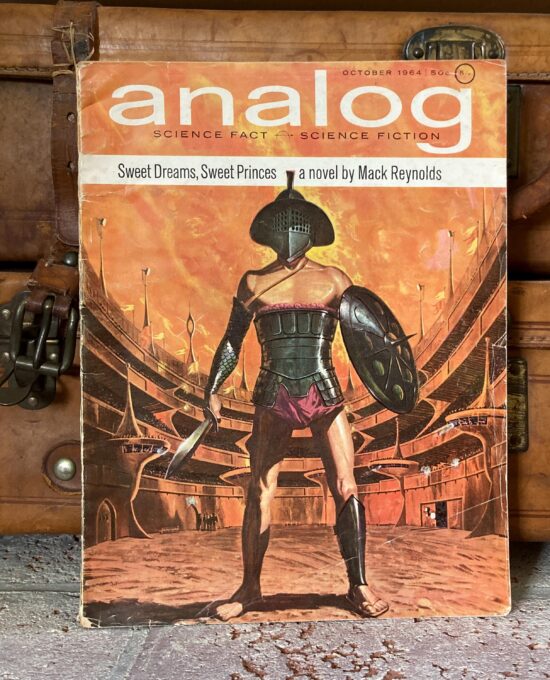

![Ray Bradbury “The Martian Chronicles” Signed [c.1974] Vintage Heritage hardcover in decorated cloth wrapped boards in slipcase Mignaini art](https://hudsonfinebooks.com/wp-content/uploads/2025/09/6376899544741a57474669e7-550x680.jpg)
![Ray Bradbury “The Martian Chronicles” Signed [c.1974] Vintage Heritage hardcover in decorated cloth wrapped boards in slipcase Mignaini art](https://hudsonfinebooks.com/wp-content/uploads/2025/09/6376899544741a837f4669f2-550x680.jpg)
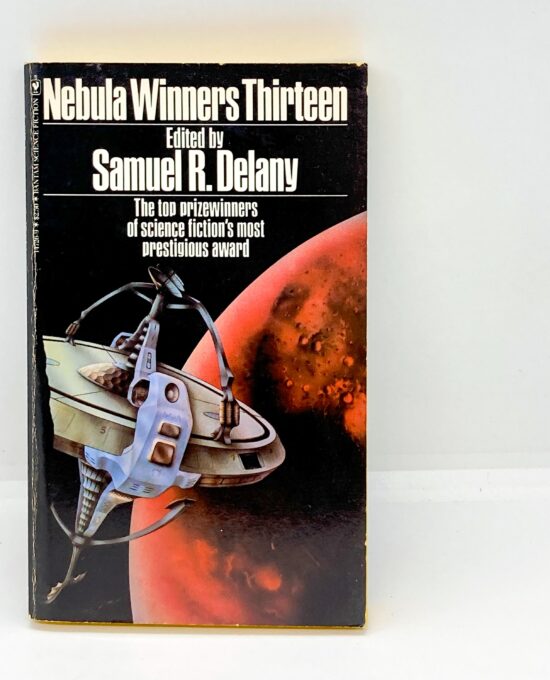
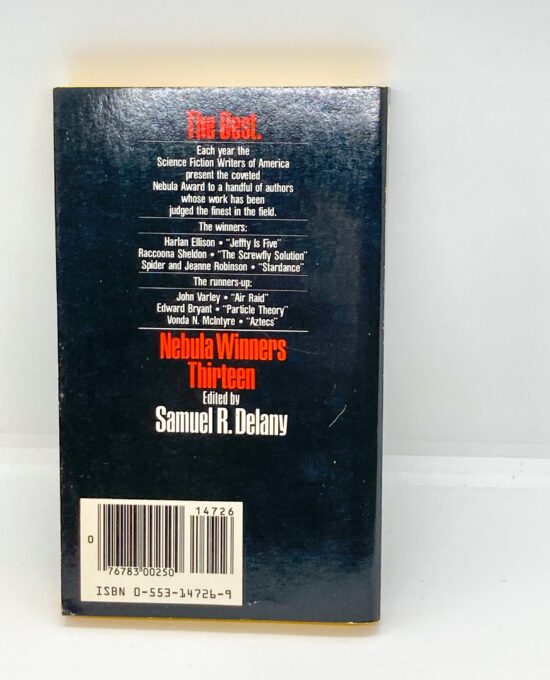
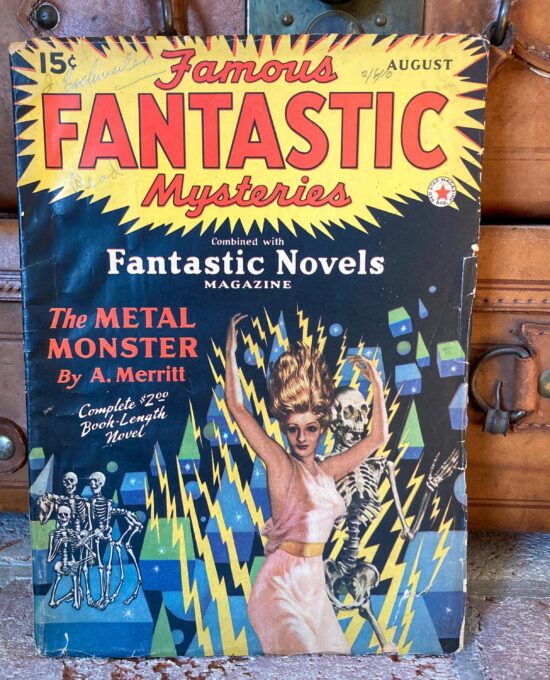
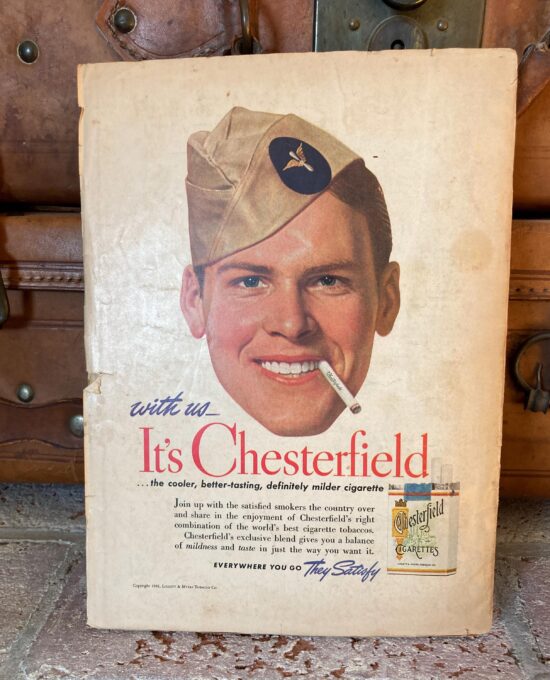
Reviews
There are no reviews yet.